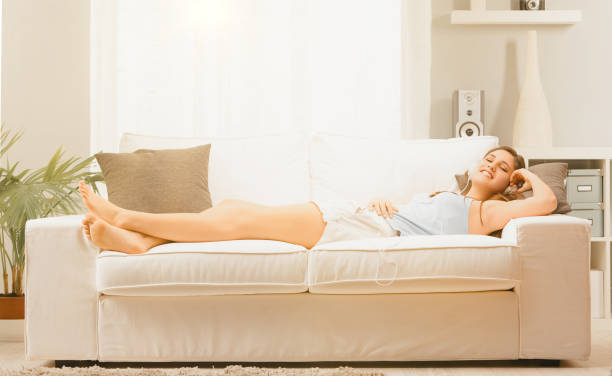Harnessing Hygge: The Danish Art of Cozy Living in American Homes
In a world of fast-paced living and constant connectivity, Americans are increasingly turning to the Danish concept of hygge to create warm, inviting spaces that promote well-being and contentment. This article delves into the essence of hygge, its rising popularity in the United States, and how homeowners can incorporate this cozy philosophy into their living spaces for a more balanced and joyful life.

The Origins of Hygge
Hygge, pronounced hoo-gah, is a Danish word that defies direct translation but encompasses a feeling of coziness, contentment, and well-being. Rooted in Danish culture for centuries, hygge emerged as a way to combat long, dark winters and foster a sense of warmth and togetherness. The concept gained international attention in the mid-2010s, sparking a global fascination with this Danish approach to happiness.
In Denmark, hygge is not just a decorating style but a way of life. It emphasizes creating moments of comfort, connection, and mindfulness in everyday situations. From sharing meals with loved ones to curling up with a good book, hygge celebrates life’s simple pleasures and encourages a slower, more intentional way of living.
The Rise of Hygge in American Homes
As the hygge philosophy spread beyond Scandinavian borders, it found a receptive audience in the United States. Americans, often caught in the whirlwind of busy schedules and digital overload, began embracing hygge as an antidote to the stresses of modern life. The concept resonated particularly strongly in home design and lifestyle choices.
Interior designers and homeowners alike started incorporating hygge elements into their spaces, moving away from stark minimalism towards a more lived-in, comfortable aesthetic. This shift reflected a broader cultural desire for authenticity, simplicity, and emotional well-being in our living environments.
Key Elements of Hygge Design
Creating a hygge-inspired home involves more than just adding a few cozy throws and candles. It’s about cultivating an atmosphere that promotes relaxation, intimacy, and joy. Here are some key elements to consider:
-
Soft Lighting: Hygge emphasizes warm, soft lighting to create a soothing ambiance. Think table lamps, string lights, and plenty of candles.
-
Natural Materials: Incorporate organic textures like wood, wool, and leather to bring a sense of nature indoors.
-
Comfortable Textiles: Layer plush rugs, chunky knit blankets, and soft pillows to create inviting nooks throughout the home.
-
Neutral Color Palette: Opt for a calm, muted color scheme with shades of white, cream, gray, and earth tones.
-
Mindful Clutter: While hygge isn’t about excess, it does embrace meaningful objects and personal mementos that bring joy and comfort.
Hygge Beyond Aesthetics
While the visual aspects of hygge are important, the philosophy extends far beyond decorating choices. To truly embrace hygge in American homes, consider the following practices:
-
Create Rituals: Establish daily or weekly rituals that promote relaxation and connection, such as family game nights or Sunday morning brunches.
-
Embrace Imperfection: Move away from the pursuit of picture-perfect interiors and celebrate the lived-in look of a truly comfortable home.
-
Foster Togetherness: Design spaces that encourage interaction and shared experiences, like cozy conversation nooks or welcoming dining areas.
-
Disconnect to Reconnect: Designate tech-free zones or times in your home to promote genuine connection and mindfulness.
-
Bring Nature Indoors: Incorporate plants, natural scents, and organic elements to create a calming, grounding environment.
Adapting Hygge to American Lifestyles
While hygge has Danish roots, Americans are finding creative ways to adapt the concept to their own cultural context. This adaptation often involves blending hygge principles with existing design preferences and lifestyle habits.
For example, open-concept living spaces, popular in many American homes, can be made more hygge by creating distinct cozy zones within the larger area. Similarly, outdoor living spaces like patios and decks can be transformed into hygge havens, extending the concept beyond the traditional indoor focus.
Moreover, Americans are incorporating hygge into their busy routines by carving out small moments of coziness throughout the day. This might mean setting up a hygge-inspired home office nook or creating a relaxing bedtime ritual to bookend hectic days.
The Future of Hygge in American Homes
As hygge continues to influence American home design and lifestyle choices, we’re likely to see a lasting impact on how we approach our living spaces. The concept aligns well with other emerging trends like slow living, mindfulness, and the prioritization of mental health and well-being.
Looking ahead, we can expect to see hygge principles informing not just interior design, but also architecture and urban planning. The idea of creating cozy, communal spaces may extend to shared areas in apartment buildings, co-living spaces, and even public spaces in cities.
Furthermore, as sustainability becomes an increasingly important consideration in home design, hygge’s emphasis on simplicity and quality over quantity aligns well with eco-conscious living. We may see a rise in hygge-inspired spaces that also prioritize sustainable materials and energy-efficient designs.
In conclusion, the adoption of hygge in American homes represents more than just a passing trend. It reflects a deeper shift towards creating living spaces that nurture our well-being and foster genuine connections. By embracing the cozy, contented spirit of hygge, Americans are transforming their homes into havens of comfort and joy, one candlelit evening at a time.





